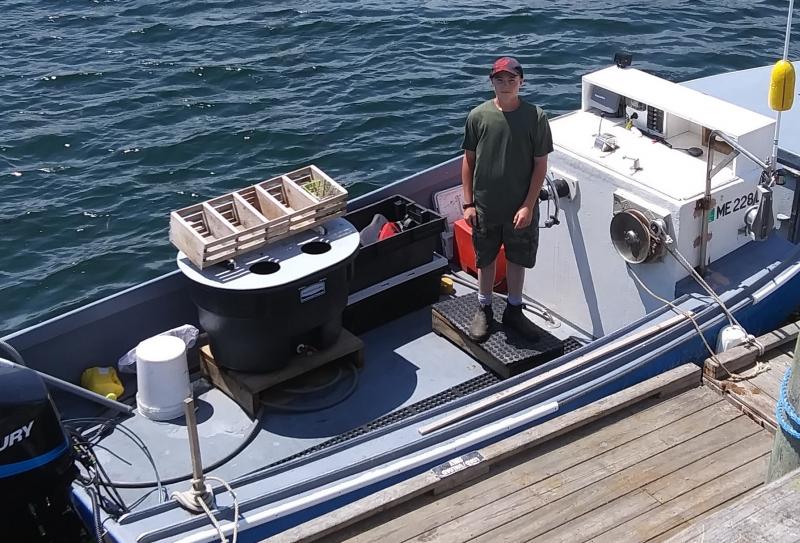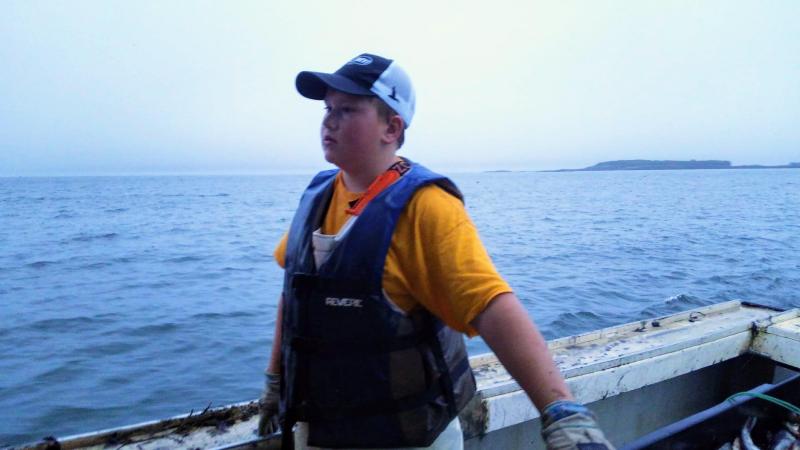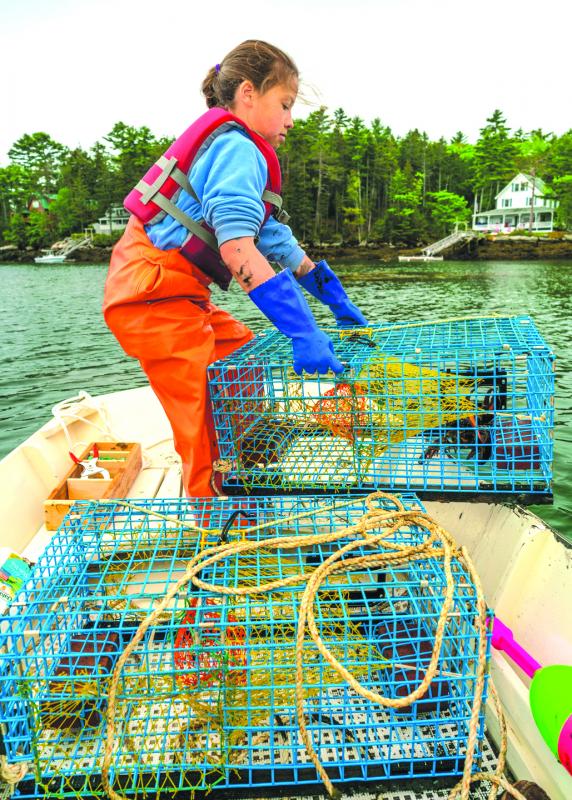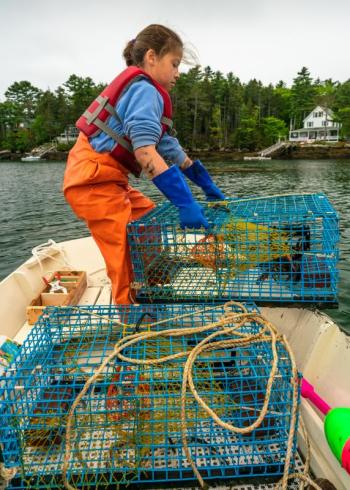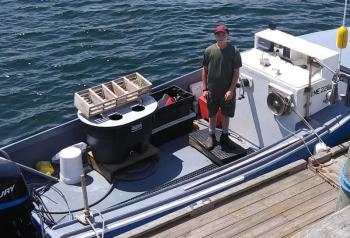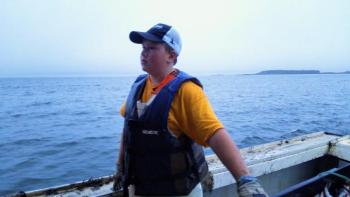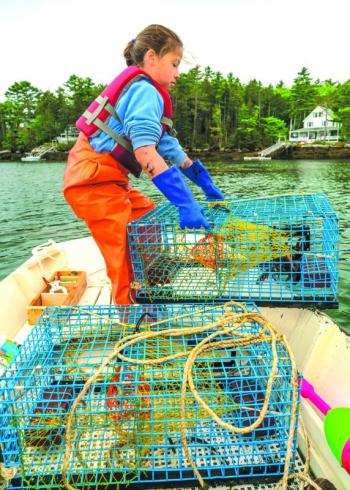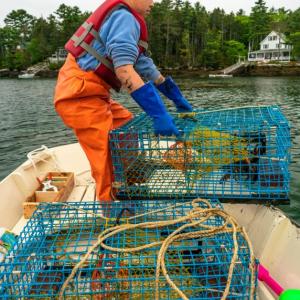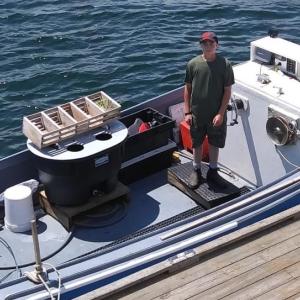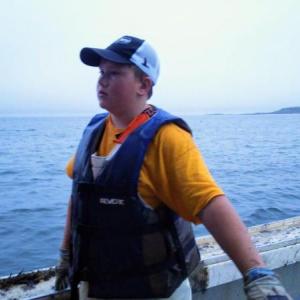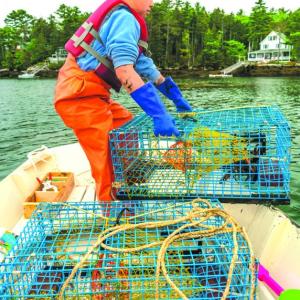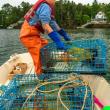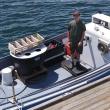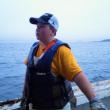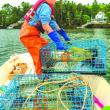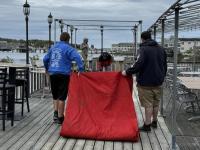From schoolyard to sternman – not your typical summer vacation
Ask Jeff and Kim Lewis what their 11-year-old son Isaac was doing in May and they will tell you he was worrying about the high cost of herring.
Not the kind of thing most sixth graders worry about, but Isaac loves to catch lobster and last spring the bait fish became pricey. So he kept an eye out and later that month asked his dad to drive him to Damariscotta, where the alewives were running and he could buy enough to help keep his lobstering costs down.
Lucy Berman’s buoys are registered with the state – a requirement for all lobster licensees – as “green and pink with black dots for seeds,” because she likes watermelon. The 13-year old student at Cape Elizabeth Middle School hauls by hand from a 15-foot skiff named Maggie. It’s her “grampy’s boat” as she calls Jim Newton who has a vacation home on Southport.
Robert Shaw’s mother Amy said sometimes people say her son Robert is “tight” but “he’s selective about how he spends the money he earns from lobstering and other jobs.” The 13-year old student at Boothbay Region Elementary School has earned enough as a sternman and through other activities to buy his own 21-foot boat.
Lobstering, it turns out, is not just for weathered old salts. Shaw, Berman and Lewis all have the appropriate non-commercial licenses from the state Department of Marine Resources and all have passed a test so they can place and haul traps.
But it takes more than an online test and some lobster traps to catch lobsters. So they all started out as sternmen, working for and learning from experienced lobstermen in the area.
Shaw is sternman for Steve Simmons, Lewis learned from his grandfather “Sonny” Artzer and Berman was taught by Rusty Court. They have all put in the requisite effort to receive a license, which in Maine is open to anyone over 8 years old.
The license does not permit them to sell their catch, but they can eat all the lobsters they catch which works out well since all three really like lobster. Berman eats lobster twice a week and Lewis proudly cooked the first lobster he caught for his mom, Kim.
Shaw’s father, Robert, encouraged his son to enter the apprenticeship program and built a 14-foot boat for his son. “Hauling traps makes for a really good baseball arm,” his mother said. Shaw goes out of Cape Newagen one or two days each week with Simmons.
“Baiting, hauling, getting lobsters out of traps,” Berman said in pointing out that it’s hard work. And although her grandfather or father might row the boat for her, “the one holding the license is responsible for what happens.” She generally goes out every two days to check her traps.
Lewis wants a boat of his own and can’t wait to reach the ripe old age of 14 when he can take the Coast Guard’s safety course for boaters. Under the state’s apprenticeship program, he needs to put in 1,000 hours, defined by the state Department of Marine Resources as “1,000 fishing hours over a minimum of 200 days stretched out over a minimum of two years,” before being placed on a waiting list for a commercial lobster license.
Lewis has completed his required time. According to his father, Jeff, “It surprised the warden who thought it was quite a feat to accomplish this in such a short amount of time.”
While they are different as people, they share a surprisingly mature tone when they talk about going out in a boat to catch lobsters. Each knows how much lobstering will be in his or her future. Lewis plans to have a commercial license. Berman and Shaw see it as something they may continue to do as they take on other occupations.
All three agree it is fun. And, as Berman pointed out, “It’s quiet. The world’s not on electronics when you are at sea.”
Event Date
Address
United States


